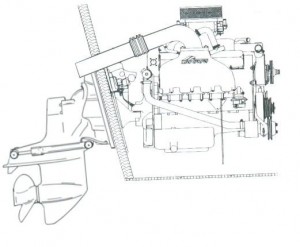Pros and Cons of Each Drive System

A boat’s drive system consists of components that work together to transfer engine power to the water, directing the thrust of the vessel. A problem with the drive system can spell disaster for a boat’s mobility and bring what should have been a peaceful day out on the lake to a screeching halt. Today we’ll take a closer look at the three main types of drive systems as well as their individual strengths and weaknesses.
Drive systems are identified by their positioning in the boat. The three types include inboard, outboard and inboard/outboard. Among the three, outboard motors are highly touted for their portability and the fact that they don’t take up any interior space. It’s crucial that the weight of an outboard is chosen according to the size of a boat, as a heavy motor can cause the craft to sit low in the water. Before taking an extended trip with this type of engine, it’s crucial to pack a supply of bulk outboard motor oil.
Inboard engines often get credit for providing more stability as they can be balanced inside the boat near the center of the hull. Unfortunately, these engines are less than ideal when families or large groups of friends want to take a ride; they simply take up so much interior room. An inboard/outboard system solves the space problem by keeping most of its components outside the boat, but the engine itself is more complex and prone to breakdowns.

